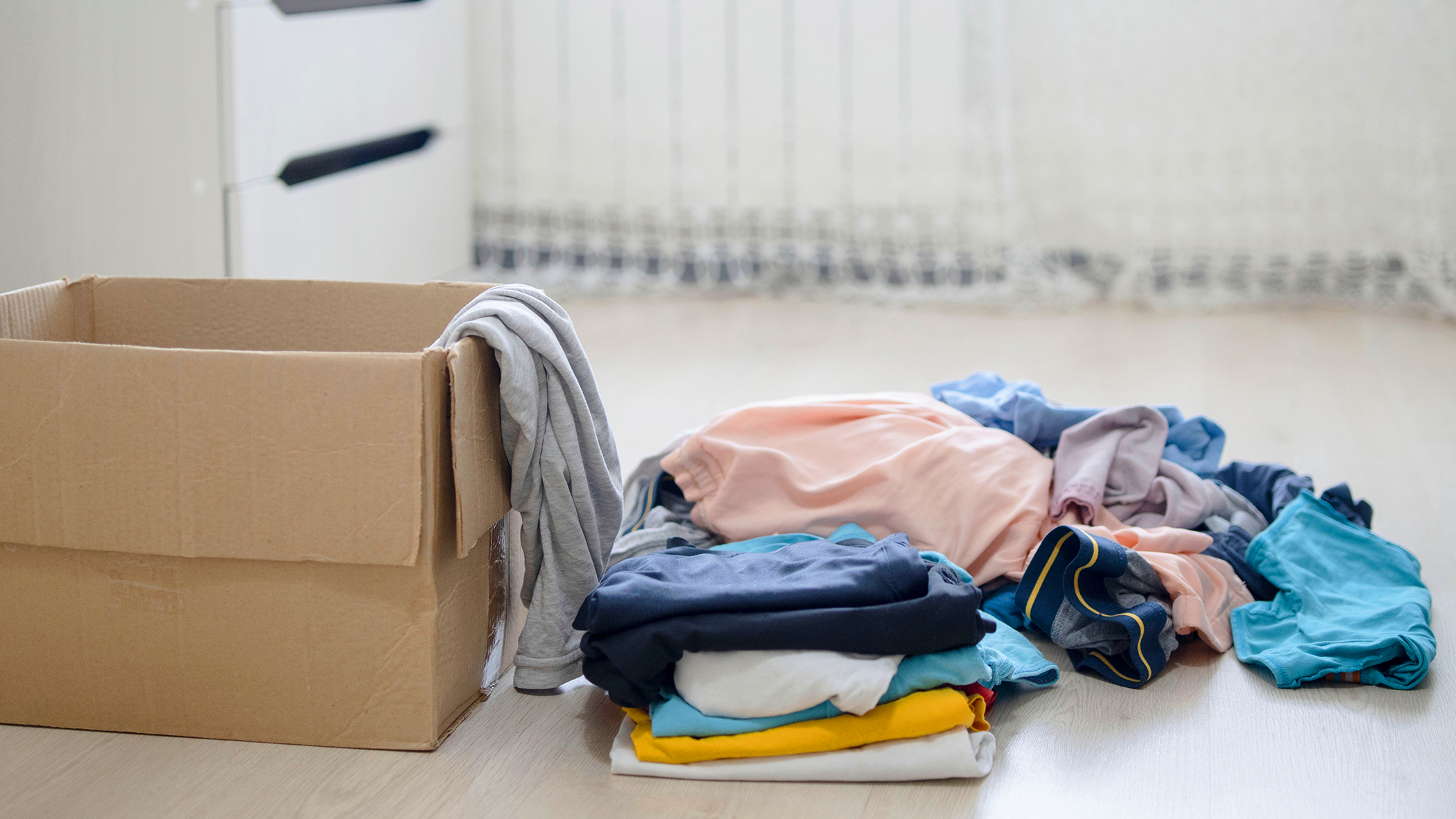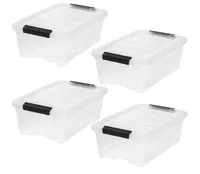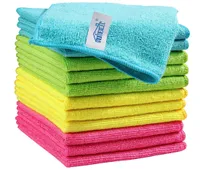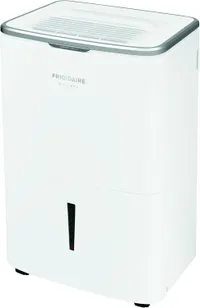3 surprising things breeding mold in your home — and why experts recommend decluttering as a fix
Declutter these mold-inducing items

If you’re battling the chill, you may often find yourself cranking up the heat or blocking out drafts to keep warm. But while you’re busy winterizing our homes by closing all windows and doors, you could unknowingly be causing mold in your home.
Mold is caused by excess moisture or humidity in the air that can also be caused by condensation around windows. But what you may not know is that your clutter can also be a major culprit for encouraging mold in your home.
According to experts, cluttered homes are the ideal breeding ground for damp and potential mold spores. Not only do these items absorb moisture in the air, but they can also block airflow in humid rooms.
By simply removing these items, not only can you prevent mold, and this gives you more reason to finally tackle your clutter before the new year.
I’ve asked the experts what household items you need to declutter right now in order to prevent mold this fall and winter.
1. Storage/cardboard boxes

“The most common issues are old furniture and boxes stacked up against external walls or blocking corners”
Martyn Fowler, founder of Elite Renewables
If you have a compact room or lack storage space, placing excess items into cardboard boxes may seem the obvious solution. However, experts warn against this habit as stored boxes can trap humidity and restrict airflow.
“The most common issues are old furniture and boxes stacked up against external walls or blocking corners,” states Martyn Fowler, founder of Elite Renewables. “Cardboard boxes in your loft or basement can be an issue. They absorb moisture and go soft — before long, you’ll find damp and mold creeping in.”
Get instant access to breaking news, the hottest reviews, great deals and helpful tips.
Now is a good time to declutter those cardboard boxes — getting rid of old or damaged items, or donating unused clothes to charity. Additionally, be sure to recycle empty appliance boxes (I’m guilty of hanging on to these) and any parcel boxes lying around.
The same applies to stacks of paperwork and books. These absorb moisture easily and can develop mold if not properly taken care of.
“The goal of decluttering is to get more airflow in the space,” adds Fowler. “It also helps you spot early signs of trouble. You can see any damp patches or signs of mold early and take remediation steps before they get out of hand”.

Another good organization tip is to use airtight plastic storage bins instead of cardboard boxes. These are more durable and less prone to humidity issues, making them ideal for storing a range of items.
“The key to reducing clutter is smart storage and intentional organisation,” states Magdalena Gierasinska, Head of Product and Displays at Barker and Stonehouse. “For example, everyday essentials should be easily accessible, while less frequently used products can be stored in cabinets or baskets.”
These stackable storage bins are great for decluttering and saving valuable space. Rather than using cardboard boxes, these are durable, and its transparency makes it easy to see your items at a glance.
2. Closets and piles of clothes

Similarly, closets are notoriously hard to keep organized, and can often become the dumping ground for all our clothes, shoes or other accessories.
But overpacked closets, or piles of clothes can trap humidity and moisture, leading to musty smells and mildew. This is especially the case when we don’t air out damp towels after use or ones rarely used.
“Damp laundry left in piles, such as in laundry baskets, on chairs, or in corners, releases moisture into the air,” states Michael Rubino, Mold expert at HomeCleanse. “Even dry but densely packed clothes block airflow behind furniture or in wardrobes, creating cold spots where condensation forms.”
“Even dry but densely packed clothes block airflow behind furniture or in wardrobes, creating cold spots where condensation forms.”
Michael Rubino, Mold expert at HomeCleanse
Luckily, there are easy ways to organize your wardrobe that can not only free up valuable space, but will also prevent mold. What’s more, it’s a good time to give your closets a deep clean and get rid of things you’re hoarding.
“It’s important to regularly clean the inside of your wardrobe to prevent damp and mold from building up,” agrees Melissa Denham, Interior Design Expert at Hammonds Furniture. “Simply wipe down the shelves, hangers and walls with a mild detergent or vinegar solution. Make sure to remove any dust or debris you can see that may attract moisture and cause a musty smell to linger on your clothes.
“Use a duster to get rid of any lingering debris, and wipe both the interior and exterior of your wardrobe with a damp cloth and anti-bacterial spray to ensure it’s completely clean and fresh in preparation for your autumn and winter attire.”
This 12 pack comes in pink, yellow, green and blue and each one has all the great features of a microfiber cloth; absorbent, reusable, scratch-free and super versatile.
3. Large or excess furniture

If you have large plush sofas or furniture in a room, these can also be a moisture trap and prevent air flow around the home.
“Old furniture or upholstery can retain moisture and lead to mold growth,” states Jason Lo, CEO and Co-Founder of Burtran. “Decluttering these items will help to improve air circulation and reduce moisture traps, which will then prevent mold growth, a main contributor of spores, allergens, and toxic compounds.”
In addition, try to avoid placing large furniture against walls to allow adequate circulation — particularly in winter. “Large wardrobes, sofas, or beds pushed flush against cold external walls prevent warm air circulation,” adds Rubino.“This creates an ideal environment where condensation forms on the wall behind the furniture — leading to black mold.”
Overall, decluttering these key items will help to improve air circulation and reduce moisture traps, which will then prevent mold growth. Of course, if you’re struggling with dampness, one of the best dehumidifiers can help to instantly reduce humidity in the home.
The Frigidaire FGAC5044W1 has an excellent 50-Pint capacity and advanced smart connectivity for automation and voice control via Alexa or Google. You can operate it remotely via the app, set the target humidity and receive notifications when the bucket is full.

Follow Tom's Guide on Google News and add us as a preferred source to get our up-to-date news, analysis, and reviews in your feeds.
More from Tom's Guide
- Expert reveals the key to preventing mold is to set your thermostat to this temperature
- 9 ways to prevent mold in your home
- Mold vs. dust: How to tell the difference and remove both from your home

As the Homes Content Editor, Cynthia Lawrence covers all things homes, interior decorating, and garden-related. She has a wealth of editorial experience testing the latest, ‘must-have’ home appliances, writing buying guides and the handy ‘how to’ features.
Her work has been published in various titles including, T3, Top Ten Reviews, Ideal Home, Real Homes, Livingetc. and House Beautiful, amongst many.
With a rather unhealthy obsession for all things homes and interiors, she also has an interior design blog for style inspiration and savvy storage solutions (get rid of that clutter!). When she’s not testing cool products, she’ll be searching online for more decor ideas to spruce up her family home or looking for a great bargain!
You must confirm your public display name before commenting
Please logout and then login again, you will then be prompted to enter your display name.



